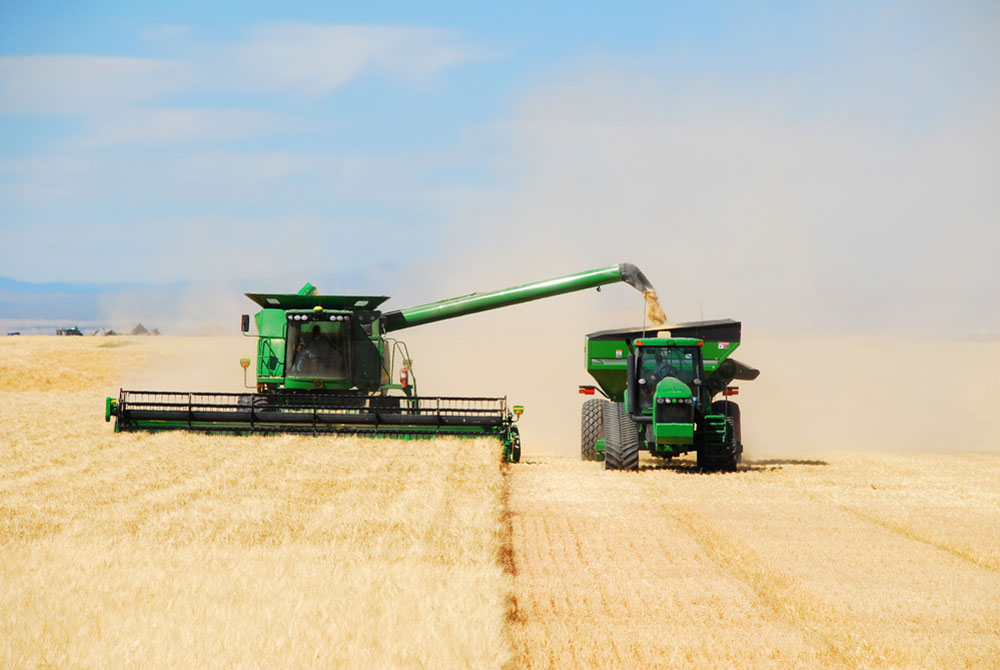'Climate Smart' Agriculture Is Blossoming (Op-Ed)


David Cleary, Director of Agriculture at The Nature Conservancy, contributed this article to Live Science's Expert Voices: Op-Ed & Insights.
In a somber scene-setter for the climate summit in New York this week, the World Meteorological Organization — the United Nation's meteorological office — released a report showing that world carbon emissions in 2013 reached a record high , and atmospheric carbon is increasing at the fastest rate seen in more than thirty years.
Some hard questions face the international order, which has spent much of that period in an interminable round of meetings meant to combat climate change. Against that backdrop, the pertinent question the UN report raises is: Why bother? If we appear to be losing the battle, what difference does yet another meeting and round of press conferences make, other than to worsen traffic conditions in lower Manhattan?
It matters when it comes to food. Rising temperatures and extreme weather events are now familiar agricultural foes in much of the world. Farmers have been managing weather since agriculture began, but all the evidence suggests that climate change will now severely tax the world's ability to feed itself within a generation. Grains, for example, can grow faster if temperatures are higher. But higher temperatures reduce the amount of time seeds have to mature, and that can depress yields. There aren't enough data yet to confirm this is happening, but at the same time, no one can say that it isn't. It is a clear danger at all scales of agriculture: Iowa corn growers and African smallholders alike. [6 Ways to Feed 11 Billion People ]
Farmers around the world, and society in general, need to place greater importance on adapting to, and mitigating, climate change. Mitigation means reducing emissions directly linked to agriculture from the current level of roughly one quarter of all emissions. That means reducing deforestation and habitat clearance, using fertilizer more efficiently, using tillage and crop rotation to sequester carbon in soil, and so forth. Adaptation involves diversifying crop portfolios, combining grazing with cropping, using water and other inputs more efficiently, and using seeds and plants that can resist climate stresses. Farmers have done much of this for millennia, but now they have to do more, and do it more urgently.
Hence a buzz-phrase you will be hearing more of: Climate Smart Agriculture.
Nothing fixes a politician's attention more than the prospect of problems with food supply. That is obvious in Africa, but no less true in developed countries which import food from around the world and rely on efficient agricultural sectors for domestic supply. So while it has been difficult to get an agreement on climate change, everyone agrees that making agriculture more resilient to climate change — Climate Smart Agriculture! — is important.
Get the world’s most fascinating discoveries delivered straight to your inbox.
September promises new announcements from governments, businesses and organizations to expand climate smart agricultural practices. Specifically, we will see the launch of a new initiative, the Climate Smart Agriculture Alliance, at the UN Climate Summit.
A stifled yawn would be a mistaken reaction. While no new money is (yet) on the table for the Climate Smart Agriculture Alliance, nor do we know how it will work, who will be involved, or even what exactly it will do, we do know some interesting players are at the table, and not just the usual governmental and non-governmental suspects. Major foundations are part of the conversation, along with their ability to bring new funding to the table and move it around more effectively. The private sector is watching closely, and some key agribusiness, food and retail companies are considering joining the effort. Climate smart agriculture is a space that bears watching, and perhaps even some guarded optimism is in order.
Until very recently, policymakers and funders viewed subjects like agricultural research and rural extension as the quintessence of worthy, but dull. This is the result of complacency bred by decades of success that began with the Green Revolution in the 1960s. Across the developing world, agricultural research institutes cut back and extension services withered. In the developed world, funding focused on subsidies, not substance.
So now, as the full implications of climate change on agriculture become clearer, there is a lot of ground to make up. The launch of the Climate Smart Agriculture Alliance is a sign that at least some important players realize that society can't afford to jeopardize future food production abilities, and are starting to do something about it.
Follow all of the Expert Voices issues and debates — and become part of the discussion — on Facebook, Twitter and Google+. The views expressed are those of the author and do not necessarily reflect the views of the publisher. This version of the article was originally published on Live Science.



